My room’s door doesn’t have a lock. It doesn’t need one. But cars probably don’t need to go above 130km/h either, yet they can, for… reasons. So for… reasons, I made a lock for my door that is very simple and requires no modification of the door’s current hardware.
My door swings inward, so to prevent someone from coming in, I have to prevent them from pushing the door into the room. This is accomplished by bolting the door to the doorframe, using the strike plate (the little hole that the latch goes into) as a point to latch onto, much like commercially available “portable door locks”. Practically, the gap between my door and jamb was almost exactly the diameter of a screw I had lying around, so by catching the screw head onto the strike plate and closing the door, the screw would be held in place and the door could be bolted shut with a fender washer and nut. Since the screw head interfered with the door latch making the door harder to close, I cut off one side of the head tangent to the shaft so that it could catch onto the strike plate while allowing the door latch to slide right past it.
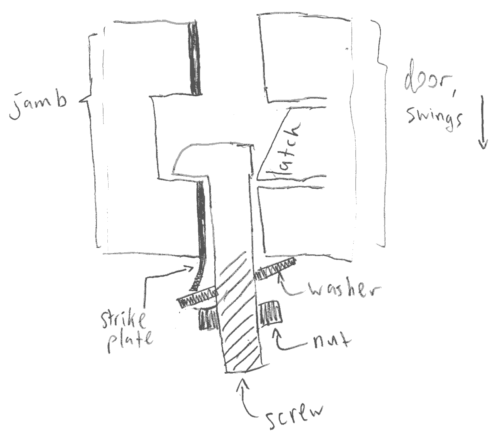
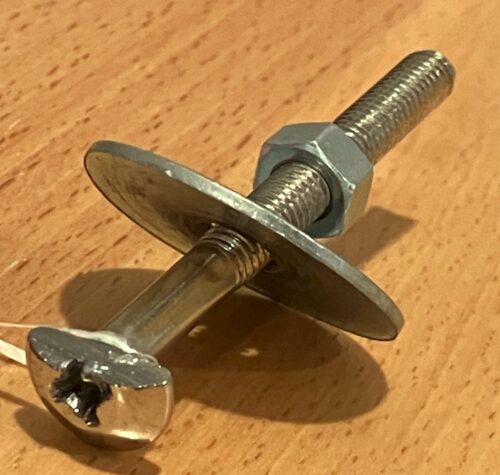
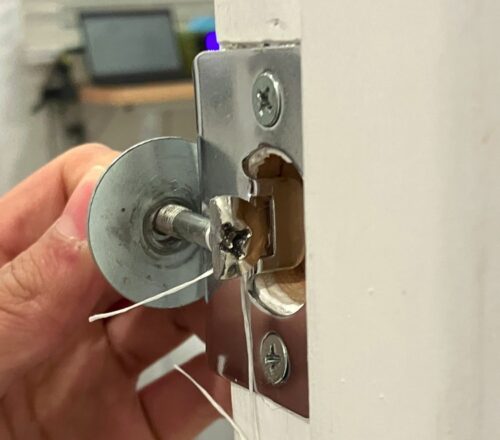
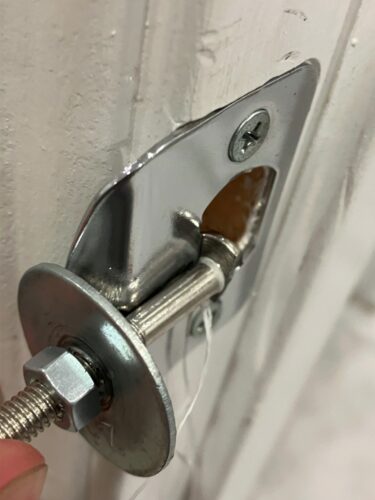
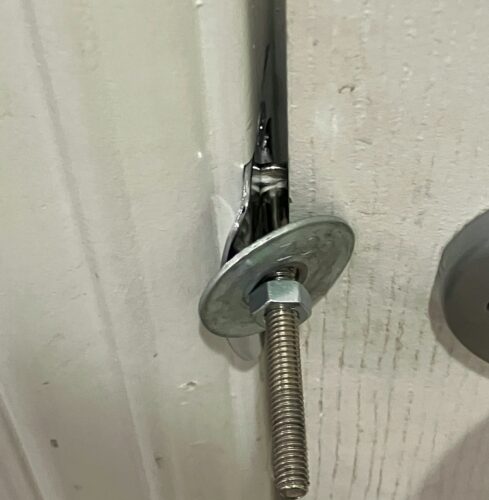
The quickest way of using this lock is to thread the washer and nut most of the way onto the screw to start out. To use the lock, pull the latch back and place the screw with the head facing the latch and the cut-off side facing the jamb, allowing you to close the door without removing the nut. Then, rotate the screw a half turn, turning the screw head into the strike plate, and tighten the nut the rest of the way. By turning the screw a quarter turn rather than a half turn upon closing the door, you can lock the door almost as well as by tightening the nut, though it seems more liable to be shaken out or something like that.
I have found that the tightness from hand-tightening a hex nut is perfectly sufficient to seal the door completely, though of course a wing nut would be more convenient. Also, I used some string to hang the lock on my door so as to be easily accessible where it is needed.
By the way, this lock, like most domestic locks, is by no means totally secure. Sure, it can’t be opened by a screwdriver like privacy locks or picked like cylinder locks, but the strength of this lock is mostly psychological and lies in the strength of the screw (determined largely by how well it fits in the door-jamb gap and how wide the head is) and the strength of the strike plate. And don’t forget that if you use it on an interior door, anyone who really, really wants to get in will just kick down the door.

